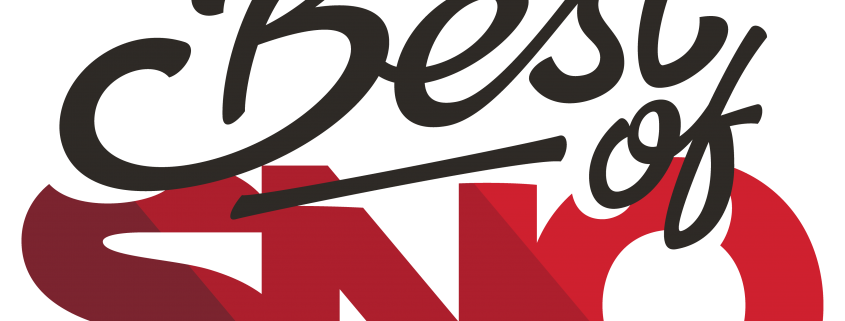Thoughts on Thanksgiving, three generations of cowboys, and the culture of cults: the last few weeks on Best of SNO
Since our last Best of Best of SNO roundup, we’ve received thousands more story submissions here at the SNO headquarters. Today, we’re sharing some of our favorites.
Before you dive in, we’d like to take a moment to point out a trend you might notice in these selections: They are not COVID-19 related. While many of your students are producing great content in that realm, after reading hundreds of stories seemingly differentiated by minutia, they start to blend together. Something to keep in mind as you continue submitting throughout the school year.
Without further ado, here are some of the best we’ve read over the last few weeks:
Indigenous in ICCSD, by Kailey Gee, Hanah Kitamoto, and Rosemary Timmer-Hackert, Iowa City West High School
Leading up to Thanksgiving, we received a handful of stories, primarily opinion pieces, arguing for readers to acknowledge the true origin of the holiday — a time of tension and exploitation of Indigenous people. The articles ask readers to reconsider celebrating, and instead, urge using the day as a reminder of the systemic racism and oppression that Indigenous people continue to experience in the U.S. However, most of these articles have one glaring hole: They completely lack the voices of Indigenous people themselves. This piece does not fall into that category.
Not only does this article about the misrepresentation of Indigenous culture feature interviews from members of the Mayan tribe, Navajo nation, and Meskwaki nation, the authors took the time to track down these individuals who make up only 0.003% of students that identify as Indigenous within their school district. The piece is inclusive and exhibits a real effort to give Indigenous students the opportunity to shape their own narratives surrounding the holiday.
Like Father, Like Son, by Kathleen Ortiz, Kingwood Park High School
We’ve said it before, and we’ll say it again: If you submit a sports story for Best of SNO consideration that is anywhere in the realm of game coverage, chances are high that it will not be selected for republication. Why? Think about it. A reader in Maine is not likely to be interested in how a high school football team in California is doing. In other words, these types of stories do not lend themselves well to a nationally-oriented platform.
This article, on the other hand, represents the ideal type of sports story we like to see for a variety of reasons. It covers an unusual sport: rodeoing. It includes a unique angle: a three-generation family of cowboys. It features a smart narrative lead to lure readers in, and uses great quotes to keep readers interested as they continue to progress through the piece. If we had to put it into sports terms, overall, it’s a slam dunk.
YEAR OF THE YARD SIGN: Election’s conflicts and tensions are playing out on area front lawns, by Keira Beller, Shalhevet High School
Since our last Best of Best of SNO email graced your inbox, the 2020 election also came to a head, resulting in Joe Biden becoming president-elect of the country. Leading up to election night, it was no secret that U.S. citizens were politically divided on a national, statewide, local, and even household level. Many submissions we received reconfirmed that.
What makes this article stand out is that it shows instead of tells. Sure, you could (and many did) send us a story quoting individuals on both sides of the political spectrum and it would be perfectly fine. But instead of repeating this format, why not document this political opposition in a new way? By painting this picture through the medium of vandalized and stolen yard signs, this story does just that.
Cult culture: understanding deception, by Erin Kee, Carlmont High School
What makes this story amazing is its pure, unfiltered sense of oddity — one of the traditional news values that journalism students are often taught. Honestly, we don’t come across many stories about cults here at Best of SNO, so right off the bat, the story angle stands out.
In addition to the angle, a few other elements elevate the piece even further. While the article initially dives into the history of cults, the authors proceed to make it timely and relevant by discussing the conspiracy cult QAnon, a hot topic in the U.S. today. The interview sources are also interesting. Who wouldn’t want to hear from a therapist specializing in cults, a cult specialist, and a host of the podcast IndoctriNation? Those titles alone are enough to draw a reader in. Finally, if all of that wasn’t enough, the infographics that are incorporated are the cherry on top of a fantastic piece.
Grady’s and Wells’s descendants excluded from Grady’s name change, by Ava Smith and Aran Sonnad-Joshi, Henry W. Grady High School
One of the ultimate purposes of journalism is to inform the public about issues that impact them. At Henry W. Grady High School, one of those current issues is a prospective school name change, potentially renaming the school to Ida B. Wells High School. While the renaming process focused primarily on the interests of various stakeholder groups, one important group was overlooked by the school district: The descendants of Henry W. Grady and Ida B. Wells themselves.
Given that these perspectives were initially excluded, the reporters of The Southerner stepped up to fill that void. They interviewed Henry Grady III, the great-great grandson of Grady High School’s current eponym, and Tiana Ferrell, the great-great granddaughter of Ida B. Wells, gathering compelling perspectives that were previously missed. Ultimately, the article helps readers make a much more informed and empowered decision when voting for their school’s new name, an opportunity that their school district initially denied.
Read more great stories like these on Best of SNO.

